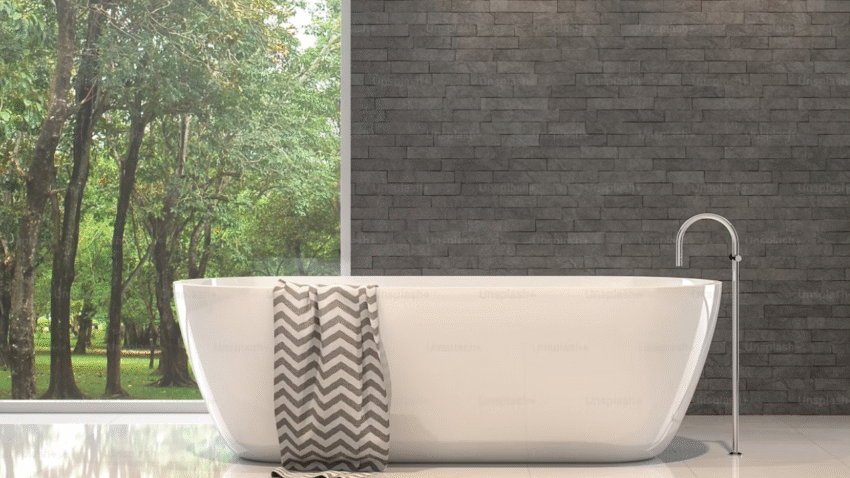Introduction
Worried there might be hidden mold in your bathroom walls? This step-by-step guide shows you exactly how to check for mold behind bathroom walls before it turns into a health hazard or structural problem. Bathrooms are high-humidity zones, and mold loves damp, dark places—especially behind drywall and tile. If you’re noticing musty smells or strange discoloration, it’s time to investigate.
Why Checking for Mold Matters in the Bathroom
Mold behind bathroom walls is a serious concern for both your health and your home. Hidden mold can contribute to respiratory issues, allergic reactions, and skin irritation. From a maintenance standpoint, mold gradually damages drywall, studs, insulation, and even tiles—resulting in costly repairs if not caught early.
Since bathrooms are often humid due to hot showers and poor ventilation, they’re the perfect breeding ground for mold. Checking for it allows you to address moisture problems, improve air quality, and prevent long-term damage to your home’s infrastructure.
Step-by-Step Guide to Checking for Mold
1. Look for Visible Clues on the Surface
Start with a visual inspection of your bathroom:
- Discoloration: Yellow, green, black, or brown stains on drywall or grout could be mold.
- Peeling paint or wallpaper: Moisture buildup causes bubbling or warping—possible mold behind the surface.
- Water spots or warped walls: These may indicate leaks or hidden moisture.
- Tile grout turning dark: While some of this may be surface mold, it could signal deeper growth behind the tiles.
Tip: Use a flashlight to check low-light corners, behind the toilet, and around the tub or shower base.
2. Use Your Nose
Your sense of smell can be a powerful mold detector:
- Musty or earthy odors often indicate hidden mold.
- If the smell gets stronger near a specific wall, there’s a good chance mold is growing behind it.
- Compare the scent in various areas of the bathroom to pinpoint the problem.
3. Check for Moisture Sources
Mold thrives where there’s water:
- Look for plumbing behind the walls—pipes, shower lines, or drainage points are common sources.
- Use a moisture meter to detect dampness in drywall. These affordable tools give digital readings of moisture levels.
- Moisture levels above 15–17% are considered high and could support mold growth.
Tip: Check both interior and exterior walls of the bathroom if applicable.
4. Use a Borescope for a Peek Inside
If you’re serious about checking behind the walls without full demolition:
- Purchase or rent a borescope camera—a thin, flexible camera that can fit through a small drilled hole.
- Drill a 1/2-inch hole in an inconspicuous area, like behind a cabinet or towel bar.
- Insert the camera and look for mold patches, discoloration, or water damage on the inner wall surface.
Warning: Always check for wires or plumbing before drilling into any wall.
5. Remove a Small Section of Wall if Needed
If all signs point to mold but you need confirmation:
- Cut a small inspection hole in the drywall using a utility knife.
- Choose an area that can easily be patched later.
- Shine a flashlight inside and inspect the cavity—look for mold on studs, insulation, and the back of the drywall.
Tip: Wear gloves, an N95 mask, and goggles during this step to avoid mold exposure.
6. Call a Professional for Air Testing
If you suspect mold but can’t find it visually:
- Hire a mold remediation or indoor air quality expert.
- They’ll perform air quality tests and spore sampling to detect hidden mold.
- These tests can reveal mold even if it’s concealed behind walls or under flooring.
Common Mistakes to Avoid
Mistake 1: Ignoring musty smells
Solution: Never assume it’s “just bathroom humidity.” Musty odors almost always signal mold.
Mistake 2: Painting over mold
Solution: Covering mold only traps it and allows it to spread. Always clean and remove it first.
Mistake 3: Using bleach on porous surfaces
Solution: Use mold-specific cleaners for drywall or wood. Bleach won’t penetrate porous materials effectively.
Mistake 4: Skipping protective gear
Solution: Always wear a mask, gloves, and goggles when investigating mold. Inhaling spores can harm your lungs.
Mistake 5: Waiting too long to investigate leaks
Solution: Address leaks immediately. Mold can begin growing in as little as 24–48 hours in moist conditions.
Extra Tips & Bathroom Hacks
- Use a dehumidifier in your bathroom if it lacks good ventilation.
- Install an exhaust fan or run the current one for 20 minutes after showers.
- Check other areas prone to moisture like behind the toilet tank or under the sink.
- Consider mold-resistant drywall (green board) if you’re renovating.
- Want to know more? Check out our full guide on how to remove mold in your bathroom once you’ve found it.
Conclusion
Mold behind bathroom walls is sneaky—but not impossible to detect. Look for signs like discoloration, musty smells, and damp areas. Use tools like a moisture meter or borescope to inspect behind surfaces without full demolition. By acting early, you’ll protect your health, your walls, and your wallet.
🔍 Bookmark this guide so you can tackle hidden mold before it becomes a major issue.
